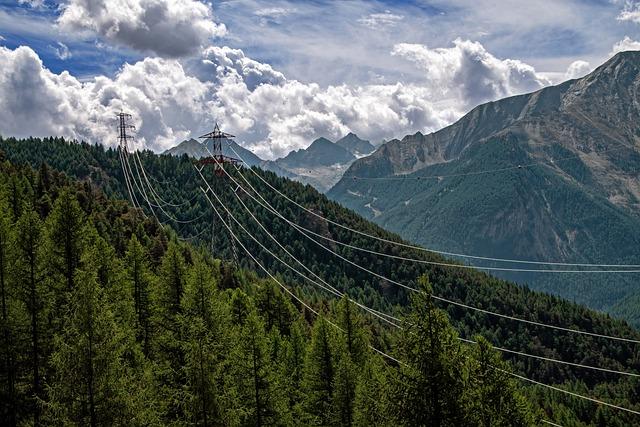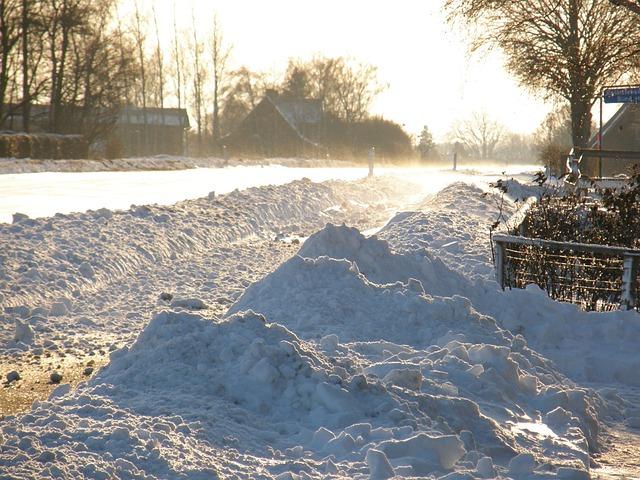Tree pruning is a common practice in maintaining the health and safety of trees in our landscapes. But what exactly is the science behind this widely used horticultural technique? In this article, we will explore the principles and benefits of tree pruning, as well as the various methods and tools used to achieve optimal results. Understanding the science behind tree pruning can help homeowners and landscapers make informed decisions about the care and maintenance of their trees.
Table of Contents
- Understanding the Importance of Tree Pruning
- Key Principles of Tree Pruning
- The Benefits of Proper Tree Pruning Techniques
- Common Mistakes to Avoid When Pruning Trees
- Best Practices for Tree Pruning Success
- Q&A
- Conclusion
Understanding the Importance of Tree Pruning
Tree pruning is a crucial aspect of tree care that involves the selective removal of certain parts of a tree, such as branches or roots. This practice is essential for maintaining the health and aesthetics of trees. Here are some key reasons why tree pruning is important:
- Promotes tree health: By removing dead or diseased branches, tree pruning helps to prevent the spread of disease and decay throughout the tree.
- Enhances tree structure: Pruning can help shape the tree and promote a strong structure, reducing the risk of branches breaking or falling during storms.
- Encourages growth: Removing excess branches can stimulate new growth and improve the overall health of the tree.
Overall, tree pruning is a science that requires careful consideration of the tree’s species, age, and condition. It is best to consult with a professional arborist who can provide expert advice on the proper pruning techniques to ensure the health and longevity of your trees.
Key Principles of Tree Pruning
Understanding the is essential for maintaining the health and aesthetics of your trees. One important principle to keep in mind is the concept of pruning at the right time. This requires knowing the specific needs of each tree species and the best time of year to prune. For example, pruning deciduous trees in late winter or early spring can help promote new growth.
Another crucial principle of tree pruning is making proper cuts. Using the correct cutting techniques can prevent damage to the tree and encourage healthy growth. It’s important to make clean cuts at the right angle, just outside the branch collar, to ensure quick healing and reduce the risk of disease.
The Benefits of Proper Tree Pruning Techniques
Proper tree pruning techniques are crucial for the health and longevity of your trees. By following the science behind tree pruning, you can ensure that your trees receive the care they need to thrive. One of the main benefits of proper tree pruning is the promotion of healthy growth. Removing dead or diseased branches allows the tree to redirect its energy to new growth, leading to a stronger and healthier tree overall.
Another benefit of tree pruning is improved aesthetics. By shaping the tree and removing any overgrown or unsightly branches, you can enhance the appearance of your landscape. Additionally, pruning can help prevent potential hazards such as falling branches or limbs, making your property safer for both people and property. By understanding the science behind tree pruning and implementing proper techniques, you can enjoy the numerous benefits that come with maintaining healthy and well-maintained trees.
Common Mistakes to Avoid When Pruning Trees
When it comes to tree pruning, there are several common mistakes that many people make. These mistakes can not only harm the tree but also affect its overall health and longevity. By understanding the science behind tree pruning and avoiding these common mistakes, you can ensure that your trees stay healthy and vibrant for years to come.
One common mistake to avoid when pruning trees is over-pruning. This can weaken the tree and make it more susceptible to diseases and pests. It’s important to only remove dead, diseased, or damaged branches, and to avoid removing more than 25% of the tree’s canopy at a time. Another common mistake is improper cuts. Making cuts too close to the trunk or leaving behind jagged edges can hinder the tree’s ability to heal properly. It’s important to make clean, precise cuts at the correct angle to promote proper healing.
Additionally, pruning at the wrong time of year can also be detrimental to the tree’s health. It’s best to prune trees during their dormant season to minimize stress and ensure proper healing. By understanding these common mistakes and the science behind tree pruning, you can help your trees thrive and flourish in your landscape.
Best Practices for Tree Pruning Success
When it comes to tree pruning, following best practices is key to ensuring success. Proper pruning not only improves the health and appearance of the tree, but it also helps reduce the risk of disease and damage. Understanding the science behind tree pruning can help you make informed decisions and achieve the desired results.
Some best practices to keep in mind for tree pruning success include:
- Identify the purpose of pruning: Whether it’s for aesthetics, safety, or health reasons, knowing why you are pruning will guide your decisions.
- Timing is important: Prune during the tree’s dormant season to minimize stress and maximize recovery.
- Know the proper techniques: Use sharp, clean tools and make cuts at the right angle to promote healing.
| Best Practices for Tree Pruning | Benefits |
|---|---|
| Identify purpose of pruning | Improves tree health and appearance |
| Timing is important | Minimizes stress and promotes recovery |
| Use proper techniques | Promotes healing and reduces risk of damage |
Q&A
Q: What is the purpose of tree pruning?
A: Tree pruning is the practice of selectively removing certain parts of a tree, such as branches, to promote healthy growth, improve tree structure, enhance aesthetics, and prevent safety hazards.
Q: How does tree pruning benefit the tree?
A: Tree pruning can help remove dead or diseased branches, improve air circulation and sunlight penetration, reduce the risk of branch failure, and encourage strong, healthy growth.
Q: When is the best time to prune trees?
A: The best time to prune trees varies depending on the species, but generally, pruning is best done during the dormant season in late winter or early spring.
Q: What are some common tree pruning techniques?
A: Common tree pruning techniques include thinning, crown reduction, crown raising, and shaping. Each technique serves a specific purpose in improving the overall health and structure of the tree.
Q: How can improper tree pruning harm a tree?
A: Improper tree pruning can lead to weakened branches, poor tree structure, increased susceptibility to disease and pests, and even tree death. It is important to follow proper pruning practices to ensure the health and longevity of the tree.
Q: Is it necessary to hire a professional arborist for tree pruning?
A: While some minor pruning tasks can be done by homeowners, it is often recommended to hire a professional arborist for more extensive pruning work. Arborists have the knowledge and experience to safely and effectively prune trees while reducing the risk of damage or harm to the tree.
Conclusion
In conclusion, understanding the science behind tree pruning is crucial for maintaining the health and longevity of your trees. By following proper pruning techniques, you can promote growth, increase resistance to disease, and enhance the overall aesthetic appeal of your trees. Remember, it is always best to consult with a professional arborist if you are unsure about how to properly prune your trees. With the right knowledge and techniques, you can ensure that your trees remain healthy and thriving for years to come. Thank you for reading.
Simpsons Tree Services, Servicing Melbourne’s North Eastern Suburbs
Book a quote online at www.simpsonstrees.com.au




